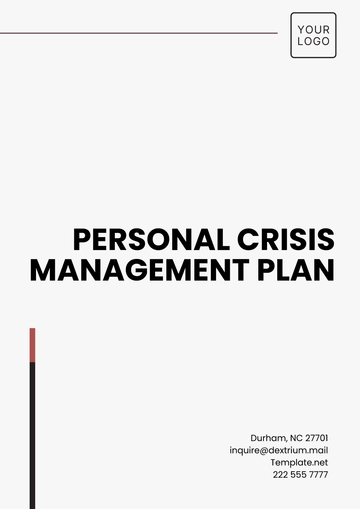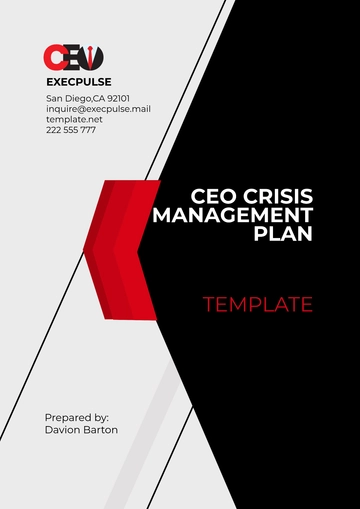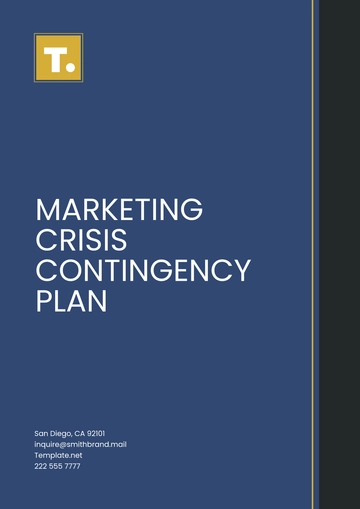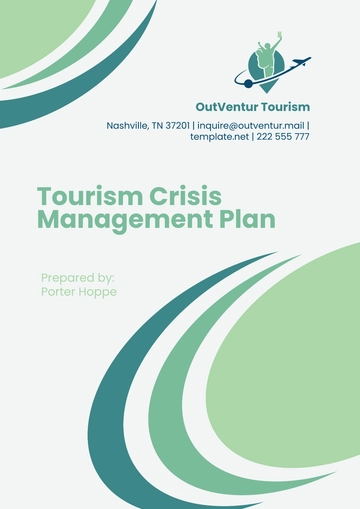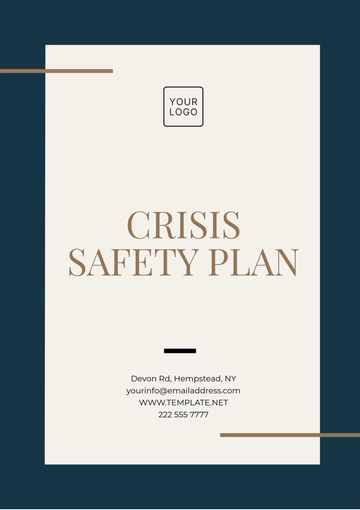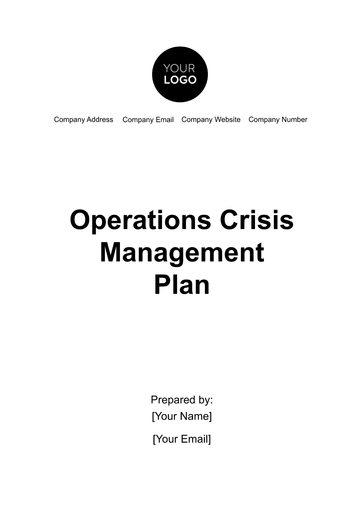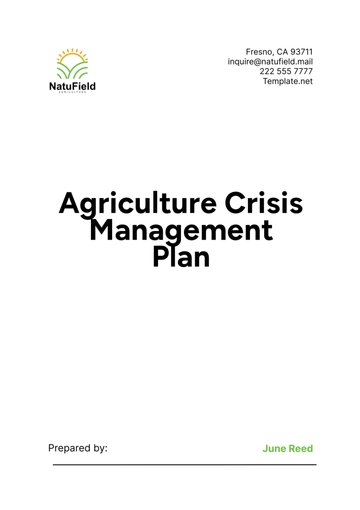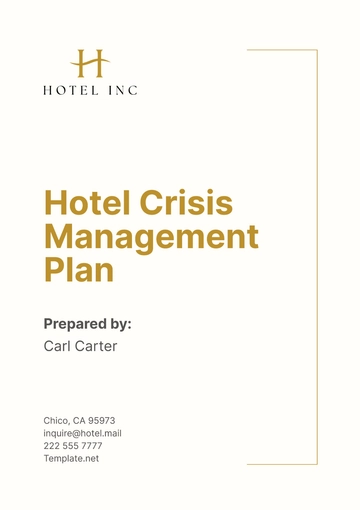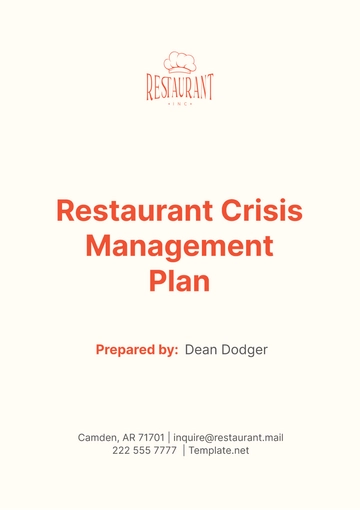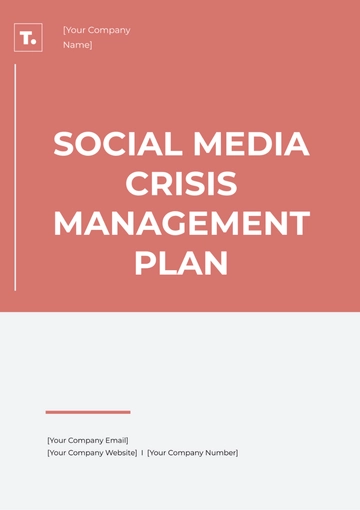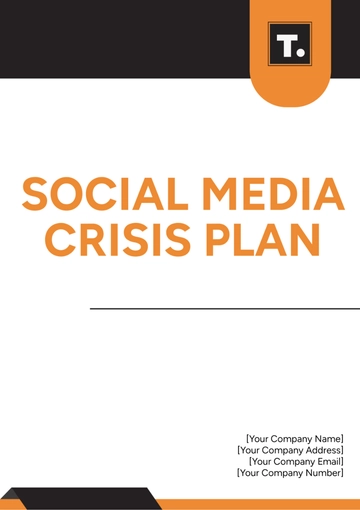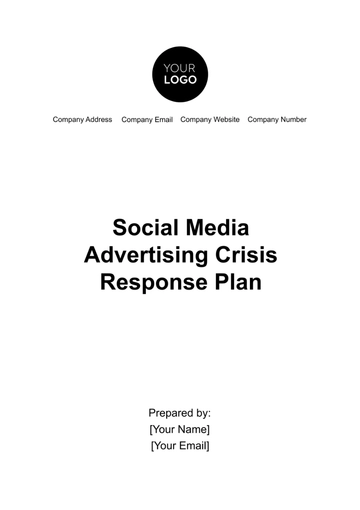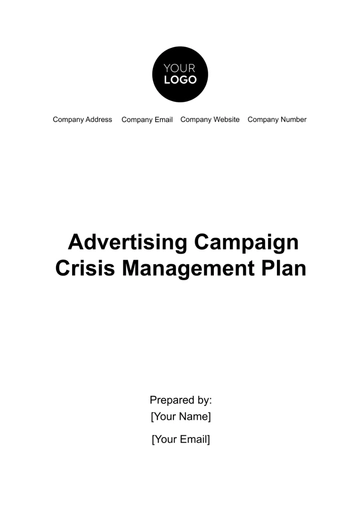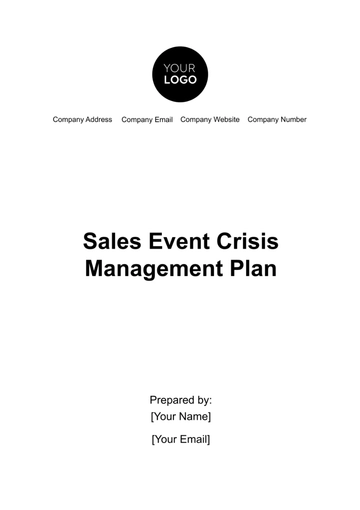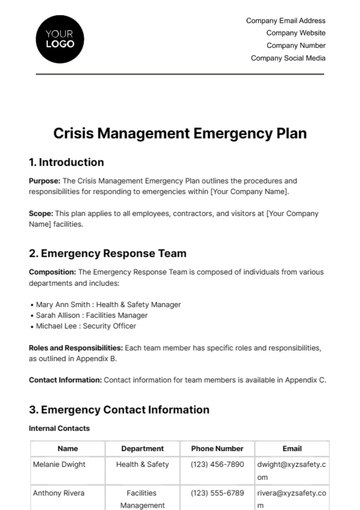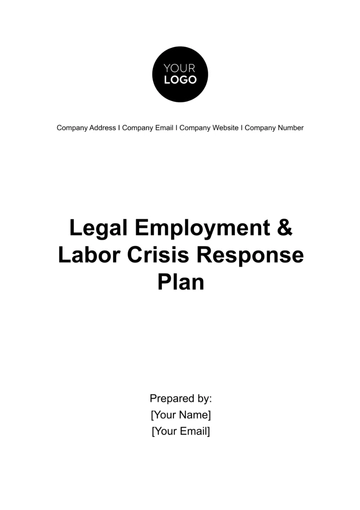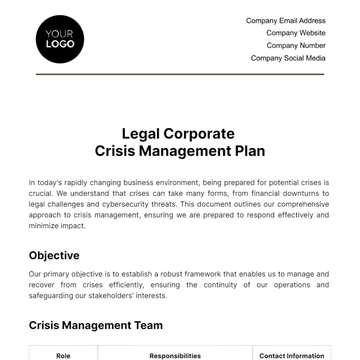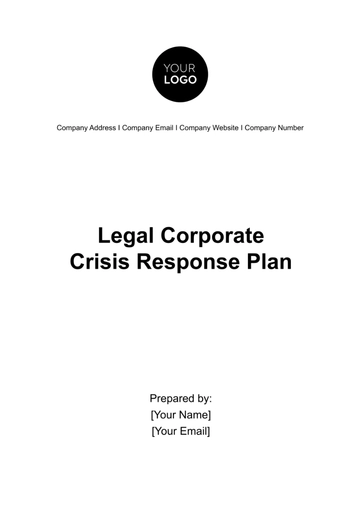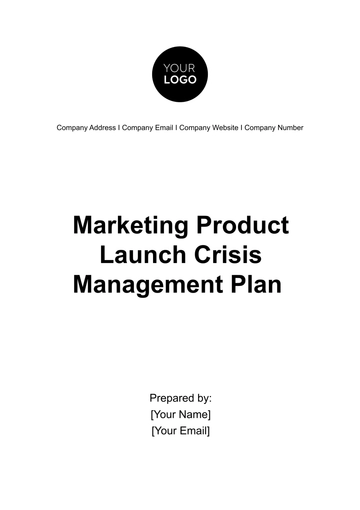Free Nursing Home Financial Crisis Management Plan
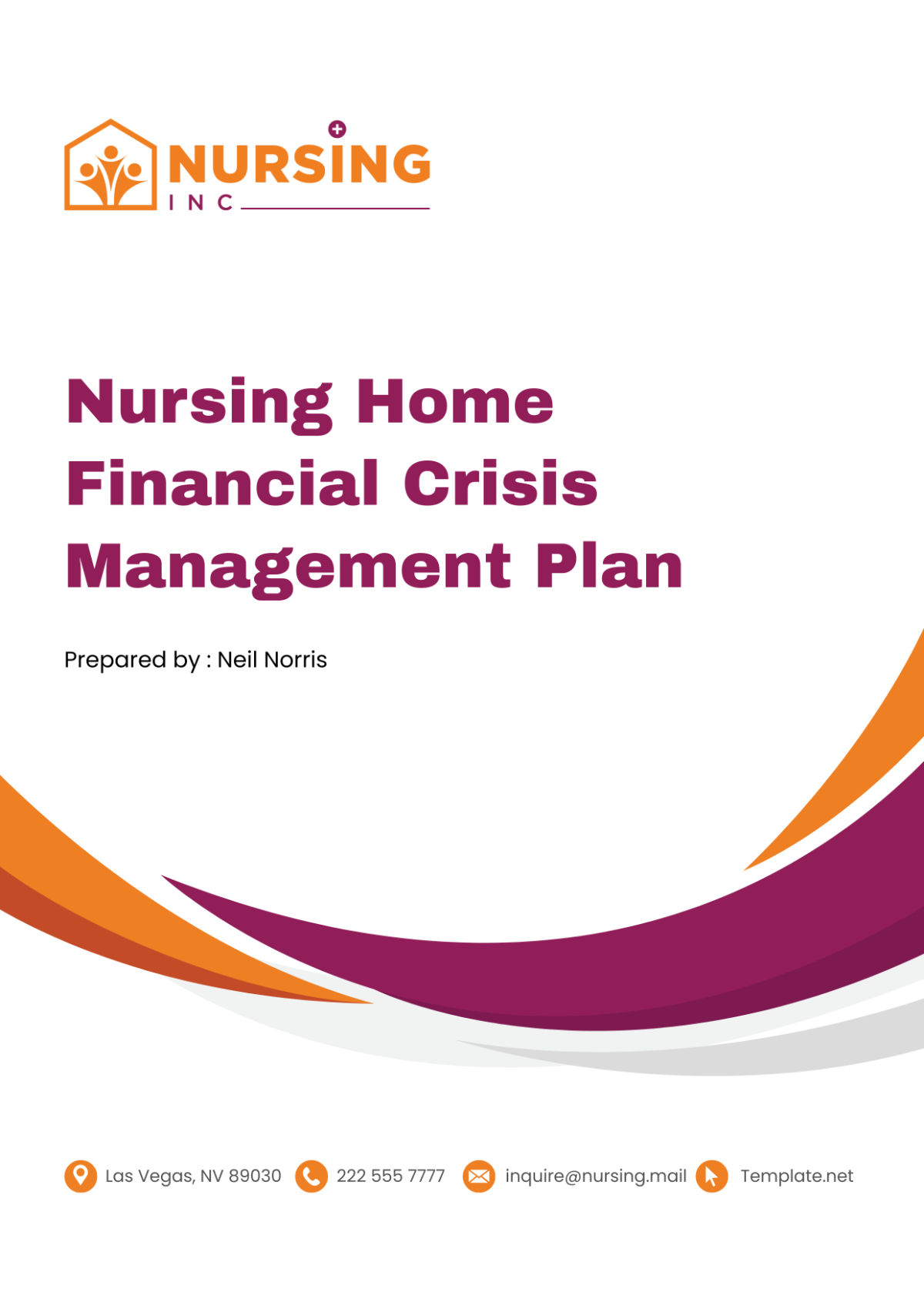
I. Executive Summary
This Financial Crisis Management Plan is designed to ensure the financial stability and operational efficiency of [Your Company Name] during times of financial distress. By addressing both immediate financial challenges and laying the groundwork for long-term fiscal health, this plan aims to safeguard the high standard of care provided to our residents. Key strategies include rigorous financial risk management, operational cost optimization, revenue enhancement, and securing emergency funding.
II. Introduction
In recent times, [Your Company Name] has encountered a challenging financial landscape characterized by increasing operational expenses, fluctuating occupancy rates, and shifts in healthcare policy that impact funding and revenue streams. These challenges underscore the urgent need for a robust and proactive Financial Crisis Management Plan that not only addresses immediate financial concerns but also lays a solid foundation for long-term fiscal sustainability and operational resilience. This plan will serve as a blueprint for navigating financial uncertainties while maintaining our unwavering commitment to providing exceptional care and support to our residents. Through strategic financial management, operational efficiency, and stakeholder engagement, we aim to uphold our mission and values during these challenging times.
III. Governance Structure
Crisis Management Team (CMT)
Role | Responsibilities |
|---|---|
CMT Chair | Overseeing the crisis management process, making key decisions, and serving as the primary spokesperson. |
Financial Director | Assessing financial health, managing budgets, and identifying financial risks and opportunities. |
Operations Manager | Implementing cost-saving measures, optimizing operations, and ensuring quality of care. |
HR Manager | Managing staff-related expenses, training, and morale during the crisis. |
Legal Advisor | Ensuring compliance with all legal and regulatory requirements, and advising on legal risks. |
Stakeholder Engagement Plan: Regular updates are being provided to all stakeholders, which include the staff, residents, and their families. These updates are communicated through a variety of means such as physical meetings, newsletters that are circulated periodically, and also via the company's official website.
IV. Risk Assessment
Potential Financial Risks
External: Economic downturns, changes in healthcare policy, increased competition
Internal: Operational inefficiencies, rising operating costs, fluctuations in occupancy rates
Risk Impact and Likelihood Analysis
Risk | Impact | Likelihood | Current Mitigation Efforts |
|---|---|---|---|
Economic Downturn | High | Medium | Diversification of revenue sources |
Policy Changes | Medium | High | Regular policy review and compliance checks |
Increased Competition | High | Medium | Marketing and service diversification |
Operational Inefficiencies | Medium | Low | Continuous process improvement initiatives |
Rising Operating Costs | High | High | Cost-control measures and efficiency improvements |
Fluctuating Occupancy Rates | High | Medium | Aggressive marketing an |
V. Financial Analysis
Current Financial Health Assessment
Cash Flow Analysis
A critical examination of our cash inflows and outflows over the past year has revealed specific areas of concern, notably in the timings of receivables and the management of payables, leading to occasional liquidity pressures. This analysis underscores the need for more stringent cash management practices and the exploration of new revenue streams to improve liquidity.
Profit and Loss Analysis
Our profit and loss analysis for the past fiscal year indicates a narrow margin, with operational expenses closely rivaling our revenue. Key factors contributing to this situation include rising healthcare costs, increased staffing expenditures, and maintenance costs of our aging facilities. Addressing these issues requires a dual approach of cost management and revenue enhancement.
Forecasting and Scenario Planning
We have developed financial forecasts under three scenarios to guide our planning:
Scenario | Occupancy Rate Change | Operating Cost Change | Expected Outcome |
|---|---|---|---|
Best-case | +10% | Stable | Increased cash flow and profitability |
Worst-case | -20% | +10% | Potential liquidity challenges |
Most Likely | +5% | +5% | Stable but tight financial condition |
These scenarios help in preparing for various potential futures, guiding the strategic allocation of resources to ensure financial stability.
VI. Cost Management Strategies
Optimizing operational costs is paramount to improving our financial position. By introducing a more flexible staffing model, we can better align our workforce with actual needs, reducing unnecessary labor costs without compromising the quality of care. Additionally, renegotiating contracts with suppliers and investing in energy-efficient technologies offer significant opportunities for utility and supply cost savings.
Revenue Enhancement
Our approach to enhancing revenue focuses on diversifying and improving our service offerings. By introducing specialized care programs, such as rehabilitative services and memory care, we can attract a broader demographic of residents and increase our market competitiveness. Furthermore, a strategic review of our pricing models in comparison to local market rates can identify opportunities for adjustments, ensuring that we remain both competitive and financially viable.
VII. Emergency Funding Strategies
The sustainability of [Your Company Name] during financial crises hinges significantly on our ability to secure emergency funding without compromising our long-term financial health or operational capabilities. Our strategies are multi-faceted, aiming to build a robust financial safety net.
Reserve Fund Management
A key pillar of our emergency funding strategy is the establishment and prudent management of a reserve fund. This fund is designed to cover operating expenses during unexpected financial shortfalls.
Policy Development: We will develop a clear policy outlining the conditions under which the reserve can be accessed, the process for replenishment, and guidelines for fund management to ensure its growth and sustainability.
Funding Goals: Our objective is to grow this reserve to cover at least six months of operating expenses, providing a substantial buffer against financial instability.
External Funding Avenues
External funding avenues play a crucial role in our strategy to ensure liquidity during crises. We will actively pursue the following:
Loans: Secure lines of credit and other loan products with favorable terms, to be used only when absolutely necessary to avoid exacerbating financial strain with high-interest debt.
Grants and Subsidies: Identify and apply for grants and subsidies available to healthcare providers, especially those offering services to underserved populations or specializing in critical care areas.
Donations and Fundraising: Launch targeted fundraising campaigns to garner support from the community, alumni, and philanthropic organizations, emphasizing the impact of their contributions on resident care and services.
VIII. Communication Plan
Maintaining trust and transparency with all stakeholders during a financial crisis is of utmost importance and hinges significantly on effective communication. We understand the importance of this and have developed a comprehensive plan to ensure smooth communication. This detailed plan encompasses all avenues of communication, both within the organization (internal) and with entities outside the organization (external), to ensure clarity and continuance of operations.
Internal Communication Strategy
Regular Updates: Conduct monthly all-staff meetings and distribute a newsletter detailing [Your Company Name]'s financial status, progress on the management plan, and any adjustments in strategy.
Feedback Mechanism: Establish an anonymous feedback system for employees to share their ideas and concerns regarding financial management and operational efficiency.
External Communication Strategy
Resident and Family Communications: Hold quarterly town hall meetings with residents and their families to discuss [Your Company Name]'s financial health, and operational adjustments, and answer any queries or concerns.
Public Relations: Maintain an active and positive presence in the media and online platforms to ensure stakeholders and the public receive accurate and timely information about [Your Company Name]'s financial stability and quality of care.
IX. Implementation Plan
In order to guarantee a structured and reliable progression toward achieving financial stability within our organization, [Your Company Name] has committed to adopting a strategic approach that will be segmented into different phases. Each of these phases will be characterized by particular actions that need to be taken to ensure financial growth and stability. In addition, we will clarify and specify the responsibilities of each party involved, thus promoting transparency and well-coordinated teamwork. Furthermore, we will also establish workable schedules and deadlines for each phase of the approach. This meticulous strategy is intended to maintain our organization's focus and align all efforts toward achieving our financial stability goals.
Short-Term Measures (0-6 Months)
Action Item | Timeline | Responsible Party | Expected Outcome |
|---|---|---|---|
Renegotiate supplier contracts | 0-2 Months | Operations Manager | Reduced supply and operational costs |
Reduce non-essential expenses | Immediate | Financial Director | Immediate cost savings |
Launch marketing campaigns | 1-3 Months | Marketing Department | Increased awareness and occupancy rates |
Review and adjust pricing models | 1-2 Months | Financial Director | Enhanced revenue through optimized pricing |
Long-Term Strategies (6-24 Months)
Strategy | Timeline | Responsible Party | Expected Outcome |
|---|---|---|---|
Implement operational efficiencies | 6-12 Months | Operations Manager | Sustained reduction in operating costs |
Develop strategic partnerships | 12-24 Months | CEO | Expanded services and revenue streams |
Adopt new technologies | 6-18 Months | IT Department | Improved operational efficiency and cost savings |
Streamline service offerings | 12-24 Months | Operations Manager | Focused resources on high-demand services |
X. Financial Recovery and Stabilization
Monitoring the progress toward recovery and stabilization involves tracking key indicators over time. This table outlines the indicators of financial health that [Your Company Name] will monitor closely.
Key Indicators of Recovery
Indicator | Target | Measurement Frequency | Responsible Party |
|---|---|---|---|
Profitability | Positive net profit for 4 consecutive quarters | Quarterly | Financial Director |
Occupancy Rates | Achieve and maintain ≥95% occupancy rate | Monthly | Marketing Department |
Operational Cost Reduction | Reduce costs by ≥10% compared to the previous year | Bi-Annually | Operations Manager |
Ongoing Stability Measures
To ensure the long-term financial health and operational efficiency of [Your Company Name], the following measures will be monitored and adjusted as necessary.
Measure | Strategy | Measurement Frequency | Responsible Party |
|---|---|---|---|
Financial Monitoring System | Implement real-time financial performance tracking systems | Continuous | Financial Director |
Quality of Care | Maintain or improve current levels of care quality | Bi-Annually | Quality Assurance Manager |
XI. Review and Evaluation
In order to guarantee the sustained pertinence and efficiency of the Financial Crisis Management Plan, it is imperative that [Your Company Name] establish and implement a strict process of inspection and assessment. This process aims to ensure that all components of the Financial Crisis Management Plan consistently adapt to evolving conditions and remain effective in delivering the desired outcomes.
Bi-Annual Plan Review
Plan Adjustments: Every six months, [Your Company Name] will review the plan in its entirety, making adjustments based on financial performance, feedback from stakeholders, and changes in the external environment.
KPI Tracking: Develop and closely monitor Key Performance Indicators (KPIs) related to financial health, operational efficiency, resident satisfaction, and staff engagement.
Annual Impact Assessment
Comprehensive Evaluation: Conduct an annual assessment to evaluate the overall impact of the financial crisis management strategies on [Your Company Name]'s operational and financial stability.
Stakeholder Feedback: Include feedback from residents, families, employees, and other stakeholders as a critical component of the evaluation process, ensuring that the plan remains aligned with the needs and expectations of our community.
- 100% Customizable, free editor
- Access 1 Million+ Templates, photo’s & graphics
- Download or share as a template
- Click and replace photos, graphics, text, backgrounds
- Resize, crop, AI write & more
- Access advanced editor
Navigate challenges with Template.net's Nursing Home Financial Crisis Management Plan Template. Tailored for rapid response and recovery, this template is fully customizable and editable through our Ai Editor Tool. Implement strategic measures to mitigate financial risks, ensuring operational continuity and stability. An indispensable tool for safeguarding your facility's future, exclusively available at Template.net.
You may also like
- Finance Plan
- Construction Plan
- Sales Plan
- Development Plan
- Career Plan
- Budget Plan
- HR Plan
- Education Plan
- Transition Plan
- Work Plan
- Training Plan
- Communication Plan
- Operation Plan
- Health And Safety Plan
- Strategy Plan
- Professional Development Plan
- Advertising Plan
- Risk Management Plan
- Restaurant Plan
- School Plan
- Nursing Home Patient Care Plan
- Nursing Care Plan
- Plan Event
- Startup Plan
- Social Media Plan
- Staffing Plan
- Annual Plan
- Content Plan
- Payment Plan
- Implementation Plan
- Hotel Plan
- Workout Plan
- Accounting Plan
- Campaign Plan
- Essay Plan
- 30 60 90 Day Plan
- Research Plan
- Recruitment Plan
- 90 Day Plan
- Quarterly Plan
- Emergency Plan
- 5 Year Plan
- Gym Plan
- Personal Plan
- IT and Software Plan
- Treatment Plan
- Real Estate Plan
- Law Firm Plan
- Healthcare Plan
- Improvement Plan
- Media Plan
- 5 Year Business Plan
- Learning Plan
- Marketing Campaign Plan
- Travel Agency Plan
- Cleaning Services Plan
- Interior Design Plan
- Performance Plan
- PR Plan
- Birth Plan
- Life Plan
- SEO Plan
- Disaster Recovery Plan
- Continuity Plan
- Launch Plan
- Legal Plan
- Behavior Plan
- Performance Improvement Plan
- Salon Plan
- Security Plan
- Security Management Plan
- Employee Development Plan
- Quality Plan
- Service Improvement Plan
- Growth Plan
- Incident Response Plan
- Basketball Plan
- Emergency Action Plan
- Product Launch Plan
- Spa Plan
- Employee Training Plan
- Data Analysis Plan
- Employee Action Plan
- Territory Plan
- Audit Plan
- Classroom Plan
- Activity Plan
- Parenting Plan
- Care Plan
- Project Execution Plan
- Exercise Plan
- Internship Plan
- Software Development Plan
- Continuous Improvement Plan
- Leave Plan
- 90 Day Sales Plan
- Advertising Agency Plan
- Employee Transition Plan
- Smart Action Plan
- Workplace Safety Plan
- Behavior Change Plan
- Contingency Plan
- Continuity of Operations Plan
- Health Plan
- Quality Control Plan
- Self Plan
- Sports Development Plan
- Change Management Plan
- Ecommerce Plan
- Personal Financial Plan
- Process Improvement Plan
- 30-60-90 Day Sales Plan
- Crisis Management Plan
- Engagement Plan
- Execution Plan
- Pandemic Plan
- Quality Assurance Plan
- Service Continuity Plan
- Agile Project Plan
- Fundraising Plan
- Job Transition Plan
- Asset Maintenance Plan
- Maintenance Plan
- Software Test Plan
- Staff Training and Development Plan
- 3 Year Plan
- Brand Activation Plan
- Release Plan
- Resource Plan
- Risk Mitigation Plan
- Teacher Plan
- 30 60 90 Day Plan for New Manager
- Food Safety Plan
- Food Truck Plan
- Hiring Plan
- Quality Management Plan
- Wellness Plan
- Behavior Intervention Plan
- Bonus Plan
- Investment Plan
- Maternity Leave Plan
- Pandemic Response Plan
- Succession Planning
- Coaching Plan
- Configuration Management Plan
- Remote Work Plan
- Self Care Plan
- Teaching Plan
- 100-Day Plan
- HACCP Plan
- Student Plan
- Sustainability Plan
- 30 60 90 Day Plan for Interview
- Access Plan
- Site Specific Safety Plan
